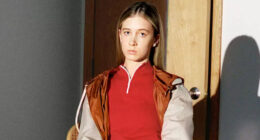Teens and adults with autism can often find socializing a bit difficult, sometimes due to communicating differently than neurotypical people. However, biases and stereotypes others may have about autism can also be problematic. A new study says that one of the best ways to counteract these roadblocks to inclusion is to educate those without autism about people on the spectrum.
Researchers at The University of Texas at Dallas looked into how familiarizing non-autistic people with the challenges and strengths of those with autism could promote inclusion and reduce biases. They found that though it helped reduce stigma and misconceptions, it was more difficult to get people to drop their implicit biases. The findings were published January 20th in the journal Autism.
Desiree Jones, a psychology doctoral student in the School of Behavioral and Brain Sciences, co-authored the study.
She says, “Targeting autistic behavior places the burden of social exclusion on autistic people, when we should really be challenging the attitudes that lead others to stigmatize autistic behaviors. Research on race suggests that people who have racial biases tend to view that race as a monolith, assigning every member the same features. By exposing them to different people from the group, you can challenge those stereotypes. We believe the same principle applies to autism.”

To test their theory, researchers split 238 participants without autism into three groups. One viewed an autism acceptance video that had originally been made by researchers at Simon Fraser University in British Columbia in collaboration with adults on the spectrum. The second group watched a general mental health training presentation that didn’t address autism, and the last had no training. They were then tested on their explicit and implicit biases about autism.
Explicit biases were measured by capturing first impressions of adults with autism in video clips, measuring participants’ autism knowledge and stigma, and determining their beliefs about autistic functional abilities. Meanwhile, implicit biases included whether participants unconsciously associated autism with negative personal characteristics.
The study found that the group that viewed the autism acceptance video showed a greater understanding and acceptance of autism on explicit measures, including showing more of an interest in socializing with adults on the spectrum and having more positive first impressions.
READ RELATED: Blood clot: Three signs in your leg of deep vein thrombosis – ‘contact your doctor’

Dr. Noah Sasson, senior author and associate professor of psychology in the School of Behavioral and Brain Sciences, says, “The fact that non-autistic people experiencing the training were more interested in social interaction with autistic people, had fewer misconceptions about autism, and reported more accurate understanding of autistic abilities after completing it is a success story of sorts.”
However, Sasson did note that it’s unclear if these personal changes would stick around in the individual or if they would fade away as time went on. The study also still found implicit negative biases about the personal characteristics of those with autism, regardless of which group the participant had been in.
Sasson says implicit biases are underlying beliefs that are hard to reverse because they’ve been reinforced over time. The researchers say those reinforcements can come from film and other media portrayals of those with autism, including “Rain Man” and “The Good Doctor.” Films and TV shows often show people on the spectrum as being very smart but socially awkward, emotionally distant, or lacking in passion.
Jones says, “These beliefs can be harmful and do not reflect how variable these characteristics are among autistic people. They belie the range of unique difficulties and skills that autistic people can have. There’s a saying that if you’ve met one autistic person, you’ve met one autistic person. The community varies so much in individual needs, strengths and difficulties that there’s not a very useful prototype. So getting to know actual people and getting away from preconceptions can hopefully help us improve social outcomes for the autistic community.”

Jones notes that they have several people within their lab who have autism and are helping steer the research toward areas important to them. She and Sasson hope that moving forward, they’ll be able to link inclusion and acceptance with the mental and well-being of people on the spectrum, as they often have higher rates of depression, anxiety, and suicide.
To read the study, click here.
Source: The Autism Site Blog






